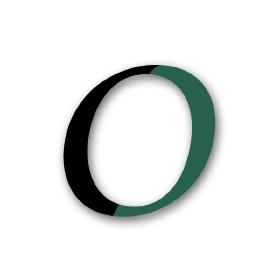
In a world that’s often filled with chaos, clutter, and noise, minimalist design stands out as a breath of fresh air. It’s an approach to design that emphasizes simplicity, clean lines, and a reduction of unnecessary elements. The goal is to achieve clarity, balance, and a sense of calmness by emphasizing essential elements and eliminating distractions. Minimalist design is prevalent in various creative fields, including architecture, interior design, graphic design, and product design, where it emphasizes the importance of functionality, usability, and visual harmony. In this guide, we’ll explore the principles, benefits, and practical applications of minimalist design.
What is Minimalist Design?
Minimalist design, also known as minimalism, is an approach to design characterized by simplicity, clean lines, and a reduction of unnecessary elements. It values essentialism over superfluous decoration and focuses on stripping away excess ornamentation to create designs that are concise, functional, and visually impactful. Minimalist design often employs a limited color palette, neutral tones, ample white space, and precise typography.
The Essence of Minimalism
At its core, minimalist design seeks to strip away excess, focusing on the essentials to create a sense of calm, balance, and clarity. It celebrates the beauty found in simplicity, reducing designs to their fundamental elements while maintaining functionality and purpose. Minimalist design values clean lines, neutral color palettes, ample white space, and deliberate use of materials. It seeks to create a serene environment, promoting a sense of relaxation and tranquility.
Principles of Minimalist Design
Minimalist design is guided by several key principles:
Simplicity
One of the core tenets of minimalist design is simplicity in form and function. It removes unnecessary embellishments and distractions, emphasizing clean, uncluttered designs that prioritize function over form.
Minimal Color Palette
Minimalist design often employs a limited color palette, with neutral colors such as white, black, gray, and earth tones dominating. This promotes a sense of serenity and timelessness.
Clean Lines and Shapes
Straight lines, geometric shapes, and precise angles create visual harmony and order within minimalist designs. This promotes clarity and simplicity while reducing visual clutter.
Negative Space
Utilizing ample white space or negative space allows the design elements to breathe, emphasizing their significance and promoting clarity.
Functionality
Minimalist design places a strong emphasis on the usability and functionality of objects, prioritizing purpose over ornamental details. This focus on functionality ensures that minimalist designs are not only aesthetically pleasing but also practical and useful.
Benefits of Minimalist Design
Minimalist design provides many benefits, including:
Enhanced Focus
By removing unnecessary elements, minimalist design helps viewers focus on the essential message or purpose of a design. This enhances clarity and reduces distractions, promoting a sense of calmness and focus.
Timelessness
The simplicity and clean aesthetics of minimalist design tend to transcend passing trends, resulting in designs that stand the test of time. This makes minimalist design ideal for creating timeless and enduring designs.
Improved User Experience
Minimalist design promotes usability and ease of navigation, allowing users to interact intuitively with products or interfaces. This enhances the user experience, making it more enjoyable and efficient.
Visual Calmness
Minimalist spaces and designs create a serene environment, promoting a sense of relaxation and tranquility. This makes minimalist design ideal for creating spaces that promote wellness and mindfulness.
Versatility
Minimalist design can adapt to various contexts and applications, making it suitable for a wide range of industries and purposes. This versatility makes it easy to incorporate minimalist design into any project or environment.
Practical Applications of Minimalist Design
Minimalist design can be applied to various fields, including:
Architecture
Minimalist architecture features clean lines, simple forms, and an emphasis on open spaces, natural light, and functionality. This creates spaces that are both beautiful and practical.
Interior Design
Minimalist interiors showcase uncluttered spaces, neutral color palettes, and a curated selection of essential furniture and decor. This creates spaces that are both serene and inviting.
Graphic Design
Minimalist graphic design employs clean typography, minimal color schemes, and restrained visual elements to convey a clear and concise message. This makes it ideal for creating logos, branding, and other visual identities.
Product Design
Minimalist product design focuses on essential functions, ergonomic considerations, and streamlined aesthetics. This results in products that are both beautiful and practical.
Web Design and User Interfaces
Minimalist web design prioritizes usability, legibility, and intuitive navigation, with uncluttered layouts and clear visual hierarchy. This creates websites and interfaces that are both beautiful and easy to use.
Conclusion
Minimalist design is a powerful approach that celebrates simplicity, functionality, and visual harmony. By removing extraneous elements and focusing on the essential, minimalist design creates impactful and timeless experiences across various disciplines. Whether in architecture, interior design, graphic design, or product design, embracing minimalism can result in designs that speak volumes through their quiet elegance and purposeful simplicity. So, take a step back, declutter, and discover the beauty in embracing simplicity with minimalist design.
